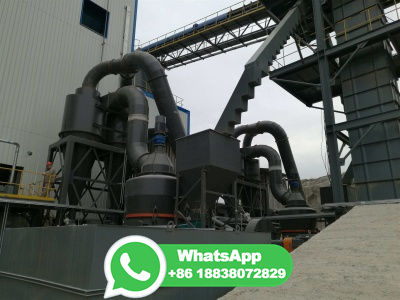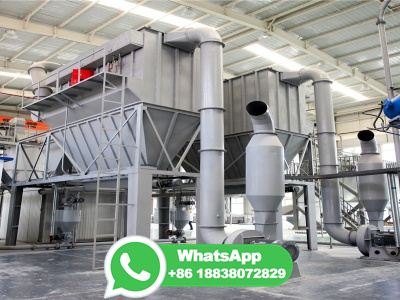
Presentation will help to provide basic principle and brief overview of iron making to steel making process. which is cover each and every stage of iron and steel making process...
WhatsApp: +86 18203695377
Steel production causes significant emissions of carbon dioxide. To decarbonize steel production and its high carbon dioxide emissions, Fraunhofer researchers, TS ELINO and Salzgitter AG are working on converting an existing steel mill to climateneutral production methods. The aim is to produce steel by the direct reduction of iron ore with hydrogen, which would completely replace ...
WhatsApp: +86 18203695377
Bessemer process, the first method discovered for massproducing steel. Though named after Sir Henry Bessemer of England, the process evolved from the contributions of many investigators before it could be used on a broad commercial basis. It was apparently conceived independently and almost concurrently by Bessemer and by William Kelly of the ...
WhatsApp: +86 18203695377
First, the raw materials, either iron ore or scrap iron (depending on the process), are converted into molten steel. The orebased process uses a blast furnace or smelter and the scrapbased process uses an electric arc furnace. Next, the molten steel is poured and solidified in a continuous caster.
WhatsApp: +86 18203695377
In the directreduced iron (DRI) process, the iron ores are reduced directly to sponge iron by gaseous reducing agents! Electrosteel process. In the electric steel process, the sponge iron obtained from the direct reduced iron process is used for crude steel making. In general, scrap is also added to this process as well as pig iron from the ...
WhatsApp: +86 18203695377
The advantage of steel over iron is greatly improved strength. The openhearth furnace is one way to create steel from pig iron. The pig iron, limestone and iron ore go into an openhearth furnace. It is heated to about 1,600 degrees F (871 degrees C). The limestone and ore form a slag that floats on the surface.
WhatsApp: +86 18203695377
The Basic Oxygen Steelmaking process differs from the EAF is that BOF is selfsufficient in energy. The primary raw materials for the BOP are 7080% liquid hot metal from the blast furnace and the steel scrap need to be balanced. These are charged into the Basic Oxygen Furnace (BOF) vessel. Oxygen (>% pure) is "blown" into the BOF at ...
WhatsApp: +86 18203695377
drex DRI Te chnologies for the Iron and Steelking Industry Pa ge | 7 Steel Making Process and CO 2222 EmissionsEmissionsEmissions Steel is primarily made by one of two processes: the blast basic oxygen furnace (BFBOF), and the electric arc furnace (EAF). The BFBOF is a twostep process. First, in the blast furnace, mined iron ore is combined
WhatsApp: +86 18203695377
In this guide to the steel manufacturing process, we'll explore the history of steel and compare it to how steel is made and used in modern applications. History of Steel Production. Steel is a discovery of the Iron Age, a period that started around 1200 BCE. Iron ore was first mined in Central Asia and Europe, and humans at this time used ...
WhatsApp: +86 18203695377
Whether it's lowcarbon, mediumcarbon or highcarbon, the first step to producing steel involves smelting raw iron. After the iron ore has been mined and harvested, it's smelted in a large furnace. It's not uncommon for these furnaces to achieve temperatures of over 3,000 degrees Fahrenheit. As the iron heats up and liquefies, it ...
WhatsApp: +86 18203695377
The BOF process uses 30% of recycled steel, while EAF uses up to 90. This is a far more sustainable option instead of mining more iron ore as a fresh ingredient in the steelmaking process. There is also an alternate steelmaking process called HIsarna ironmaking. In HIsarna, iron ore is processed immediately into hot metal.
WhatsApp: +86 18203695377
Order my new children's book on Amazon! Orville the Iron Ore on Amazon: https:///2IXVkFiSteel and iron is an essential part of our everyday life. It m...
WhatsApp: +86 18203695377
During this process, byproducts are removed, and coke is produced. Iron. During the ironmaking process, a blast furnace is fed with the iron ore, coke and small quantities of fluxes (minerals, such as limestone, which are used to collect impurities). Air which is heated to about 1200°C is blown into the furnace through nozzles in the lower ...
WhatsApp: +86 18203695377
The "Iron Ore Challenge": Commercial iron ores with iron content of 62% or higher are projected to be in short supply by the early 2030s. Hydrogen or natural gasbased steelmaking requires ores ...
WhatsApp: +86 18203695377
The steel industry contributes around 8% of the world's carbon emissions and is largely (73%) reliant on blast furnace and basic oxygen furnace (BOF) technologies to separate oxygen from the iron oxides that make up iron ore and produce the strong, permanent material known as steel. Making steel involves several applications of extreme heat.
WhatsApp: +86 18203695377
The Cort process, which allowed wrought iron to be massproduced from scrap iron for the first time, has long been attributed to the British financier turned ironmaster Henry Cort.
WhatsApp: +86 18203695377
The sinter plant turns iron ore into sinter, which is the optimal product for the blast furnace. Sinter is made by burning a mix of iron ore powder, fluxes and recycled substances from the steel plant to create an opengrained, consistent substance. The sinter is then crushed, cooled and screened for dust. Sometimes, iron ore is supplied in the form of iron ore pellets.
WhatsApp: +86 18203695377
The steel industry is therefore responsible for around 28% of the total CO 2 emissions generated by German industry. This is primarily due to the use of coke, which is required in blast furnaces to remove oxygen from the iron ore and to extract the pig iron. Work has been underway to develop new technologies to decarbonize production for years.
WhatsApp: +86 18203695377
The molten metal is 'tapped' from the bottom of the furnace into torpedoes, each one able to carry 300 tonnes of liquid iron, and moved by rail to the steel plant for conversion to steel. Making steel. At Scunthorpe, we use the Basic Oxygen Steelmaking (BOS) process our modern convertors (or vessels) take a combined charge of scrap and ...
WhatsApp: +86 18203695377
The process should lower carbon dioxide emissions in all stages of steelmaking, including pelletizing iron ore, reducing iron oxides to iron, and producing crude steel. Source: Adapted from HYBRIT.
WhatsApp: +86 18203695377
There are 6 basic steps in the Steelmaking processes, which are as followsIronmaking; This is the first step in the manufacturing of pure steel. In this step, the raw materials like iron ore, coal and lime are melted in a blast furnace. This results in the formation of molten iron, also known as hot metal, which still contains % of ...
WhatsApp: +86 18203695377
The direct reduction process uses pelletized iron ore or natural "lump" ore. One exception is the fluidized bed process which requires sized iron ore particles. ... To eliminate fossil fuel use in iron and steel making, renewable hydrogen gas can be used in place of syngas to produce DRI.
WhatsApp: +86 18203695377